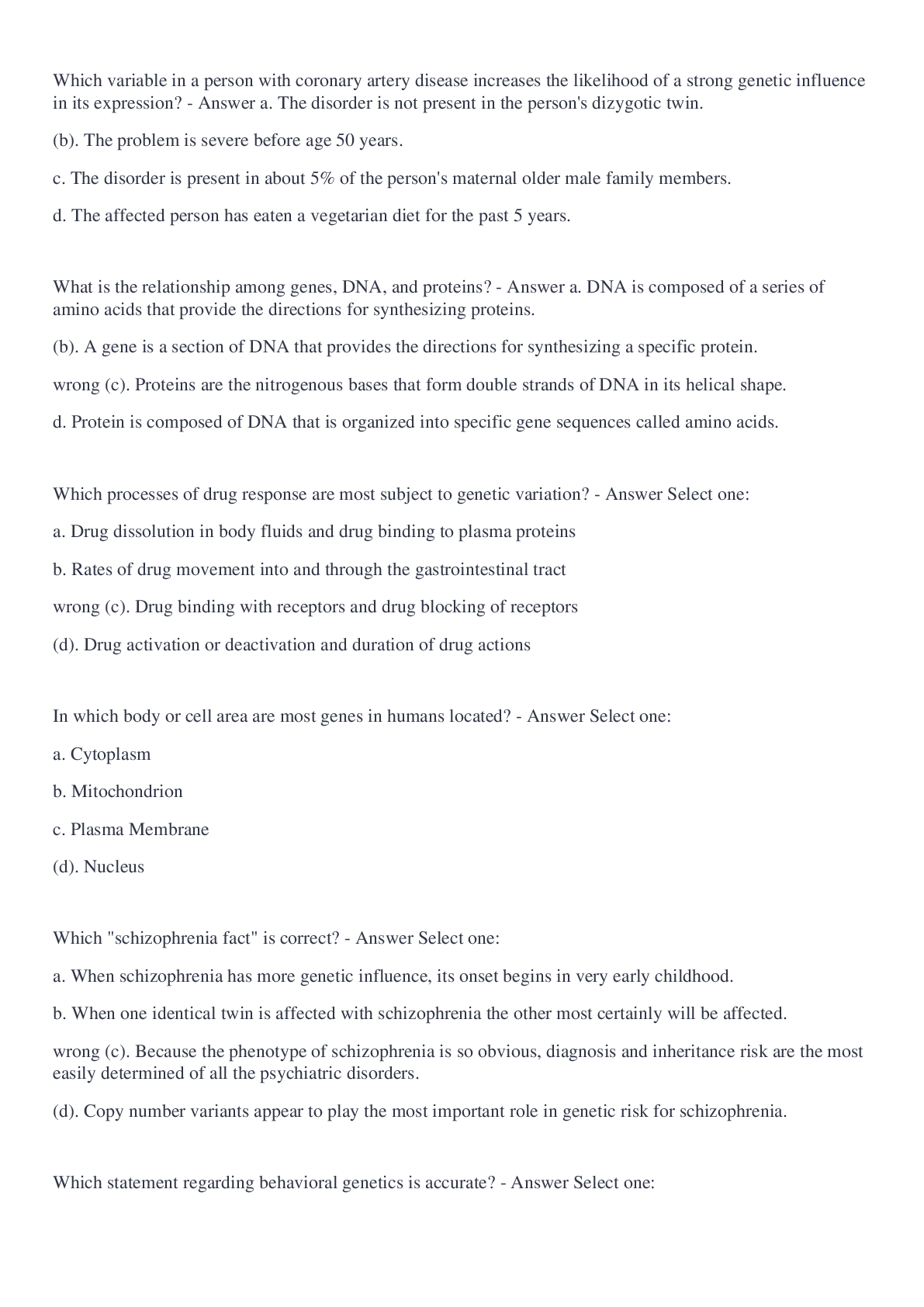*NURSING > QUESTIONS & ANSWERS > AMNH American Museum of Natural History Genetics, Genomics, Genethics for Nursing Quiz 2 (Rated 100% (All)
AMNH American Museum of Natural History Genetics, Genomics, Genethics for Nursing Quiz 2 (Rated 100%)Correct!!
Document Content and Description Below
A certified family nurse practitioner with an MSN degree in family practice who works in a clinic serving patients who have connective tissue disorders refers to himself as a clinical geneticist. Is t... his title appropriate? Select one: a. Yes, he is a clinician employed in a setting specializing in patients with genetic-based health problems b. Yes, he is an advanced practice nurse. c. No, a clinical geneticist must be certified as a genetic counselor. (d). No, a clinical geneticist is a physician who has completed a fellowship in clinical genetics. A woman whose sister tested positive for a specific mutation in the BRCA1 gene, which increases the risk for breast and ovarian cancer, is found not to have that mutation but does have a mutation of unknown significance near the known mutation site. How should this woman be counseled? a. She should be informed that her risk for breast cancer is greater than the general population but not as great as her sister's risk. b. She should be informed of her gene mutation status and be presented with all the available prophylaxis options and reconstruction options. (c). She should be informed that she does not have the specific mutation but that because another mutation is present she should be vigilant about screening d. She should be informed that because she does not have the mutation, her risk for breast cancer is not greater than that of the general population. Which lethal cardiac arrhythmia can occur as a complication of long QT syndrome? a. Mitral valve prolapse b. Atrial node reentry tachycardia (c). Torsade de Pointes d. Prolonged atrial fibrillation Which action reflects promotion of genomic care as part of comprehensive health care? Select one: (a). Ensuring that genomic issues potentially influencing a person's health are incorporated into routine care b. Instructing patients who undergo genetic testing about their obligation to inform family members regarding test results c. Encouraging all people to undergo genetic testing as part of a proactive health screening and prevention program d. Calculating the odds ratios and recurrence risks of common complex health problems for all people Under which condition(s) would genetic testing for predisposition to an inherited disorder in a minor child be considered reasonable? Select one: (a). When the risk is high and prophylaxis to reduce disorder severity is available b. When penetrance is high and the expected onset is middle adulthood c. When the mutation within a family is known and is specific d. When the family pedigree indicates an autosomal dominant pattern of inheritance Which statement regarding general cancer development is true? (a). The risk for cancer development increases with age. b. Cancers usually develop in tissues that are missing a nucleus. c. Most mutations leading to cancer development occur in structural genes. d. Children of older mothers have a greater risk for cancer development. What is the heritability estimate for addiction to alcohol in both males and females? a. 60% to 80% b. 10% to 20% (c). 50% to 60% d. 20% to 40% Julia (aged 32) is BRCA1 positive, which is known to greatly increase the risk for breast and ovarian cancer. She was tested because her mother, who had ovarian cancer, was BRCA1 positive. Julia has decided to have both of her ovaries removed because she believes that, in her family, being BRCA1 positive increases the risk for ovarian cancer only. How should a genetic counselor respond to Julia's statement? (a). Clarify that a BRCA1 mutation does not preferentially express ovarian cancer over breast cancer in any given family. b. Encourage her to consider a bilateral mastectomy. c. Discuss Julia's responsibility to inform all the other female members of her family about her BRCA1 status and cancer risk d. Accept Julia's explanation as a manifestation of her autonomy and remain nondirective in the interactions with her. Juliet tells a nurse that she has three aunts (two on her father's side, ages 42 and 56, and one on her mother's side, age 62) who were diagnosed with breast cancer. She asks if she should have genetic testing. What should the nurse tell her? Select one: (a). "Your family history may indicate an increased risk for breast cancer and a genetic counselor could help determine whether you could benefit from genetic testing." b. "Because your aunts were older when they got breast cancer, it was probably sporadic and you should just have regular mammograms like everyone else." c. "Your family history indicates a high risk and you should definitely have genetic testing." d. "Because no men in your family are affected, it is not inherited cancer so you don't need mammograms or any special screening practices." How are malignant tumors different from benign tumors? (a). Benign tumors have totally normal features, and malignant tumors have totally abnormal features. b. Malignant tumors lose plasma membranes, and benign tumors continue to produce them. c. Malignant tumors grow by expansion, and benign tumors grow by invasion. d. Benign tumors retain parental cell functions, and malignant tumors lose parental cell functions. An 85-year-old patient states that she does not perform breast self-exam because there is no history of breast cancer in her family. What is the best response? a. "Because your breasts are no longer as dense as they were when you were younger, your risk for breast cancer is now decreased." (b). "Breast cancer can be found more frequently in some families; however, the risk for general, nonfamilial breast cancer increases with age." c. "You are correct. Breast cancer is an inherited type of malignancy and your family history indicates a low risk for you." d. "Examining your breasts once per year when you have your mammogram is sufficient screening for someone with your history." Which statement about atrial fibrillation is correct? a. It is found exclusively in adults over 60 years old. b. It is the most common genetic cardiac disorder worldwide. c. When severe, it leads to long QT syndrome. (d). A variety of different genes contribute to its expression. What is the genetic contribution to the development of the most common forms of atherosclerosis? a. Disordered mitochondrial function reducing energy production (b). Variation in a variety of genes each exerting a small effect c. Single gene mutation following autosomal dominant inheritance d. Genetic predisposition expressed after exposure to a viral trigger For patients who have familial hypercholesterolemia, what should be the focus of teaching for blood cholesterol reduction? a. Exercising at least 4 to 5 hours every week b. Eliminating animal fats from the diet c. Increasing the amount of fruit in the diet (d). Taking the lipid-lowering drug as prescribed What is the heritability estimate for schizophrenia in the general population? Select one: a. 40% b. 80% c. 100% d. 60% Select one: a. 40% (b). 80% c. 100% d. 60% [Show More]
Last updated: 2 years ago
Preview 1 out of 4 pages

Buy this document to get the full access instantly
Instant Download Access after purchase
Buy NowInstant download
We Accept:

Reviews( 0 )
$10.00
Can't find what you want? Try our AI powered Search
Document information
Connected school, study & course
About the document
Uploaded On
Nov 26, 2022
Number of pages
4
Written in
Additional information
This document has been written for:
Uploaded
Nov 26, 2022
Downloads
0
Views
42

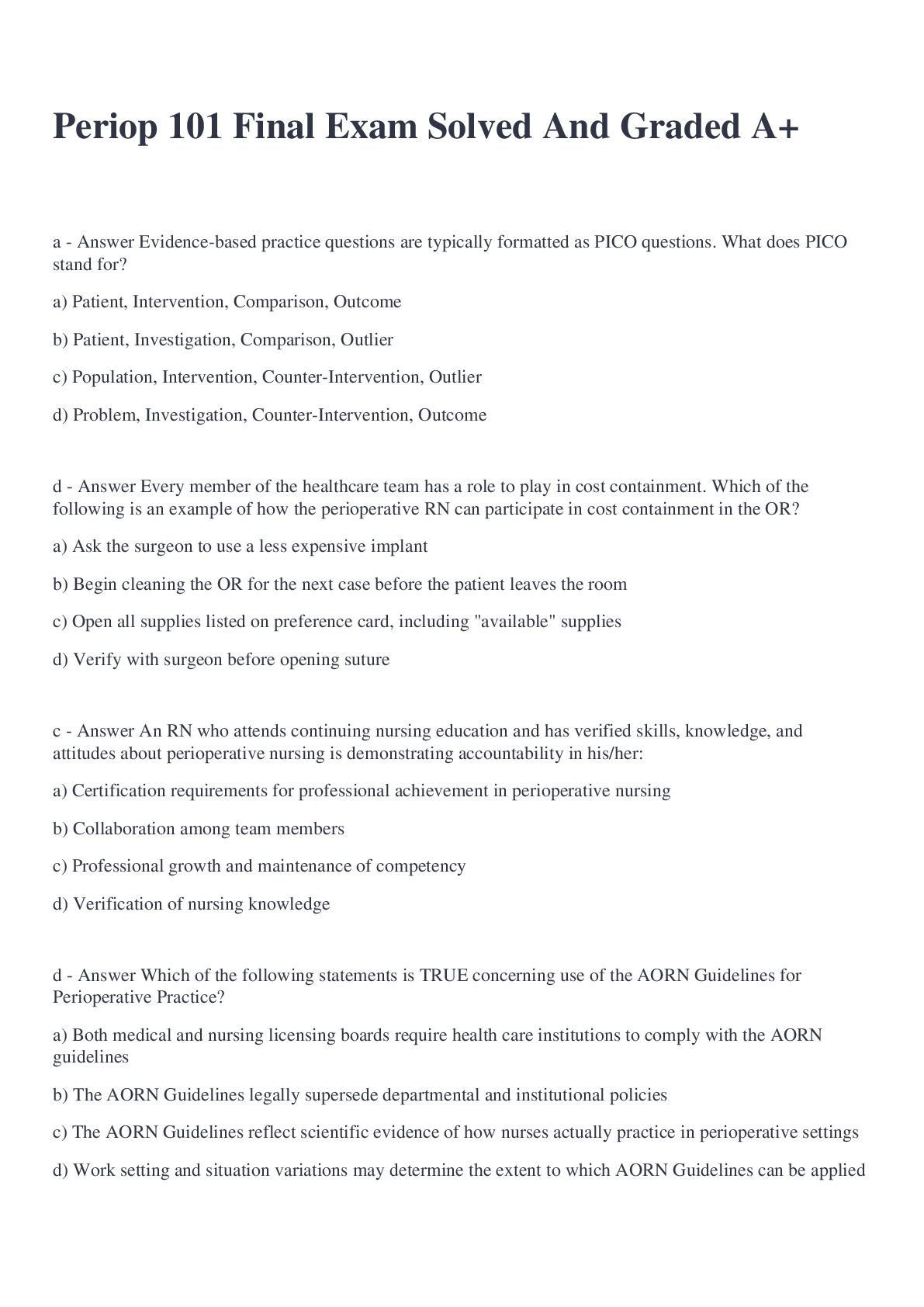
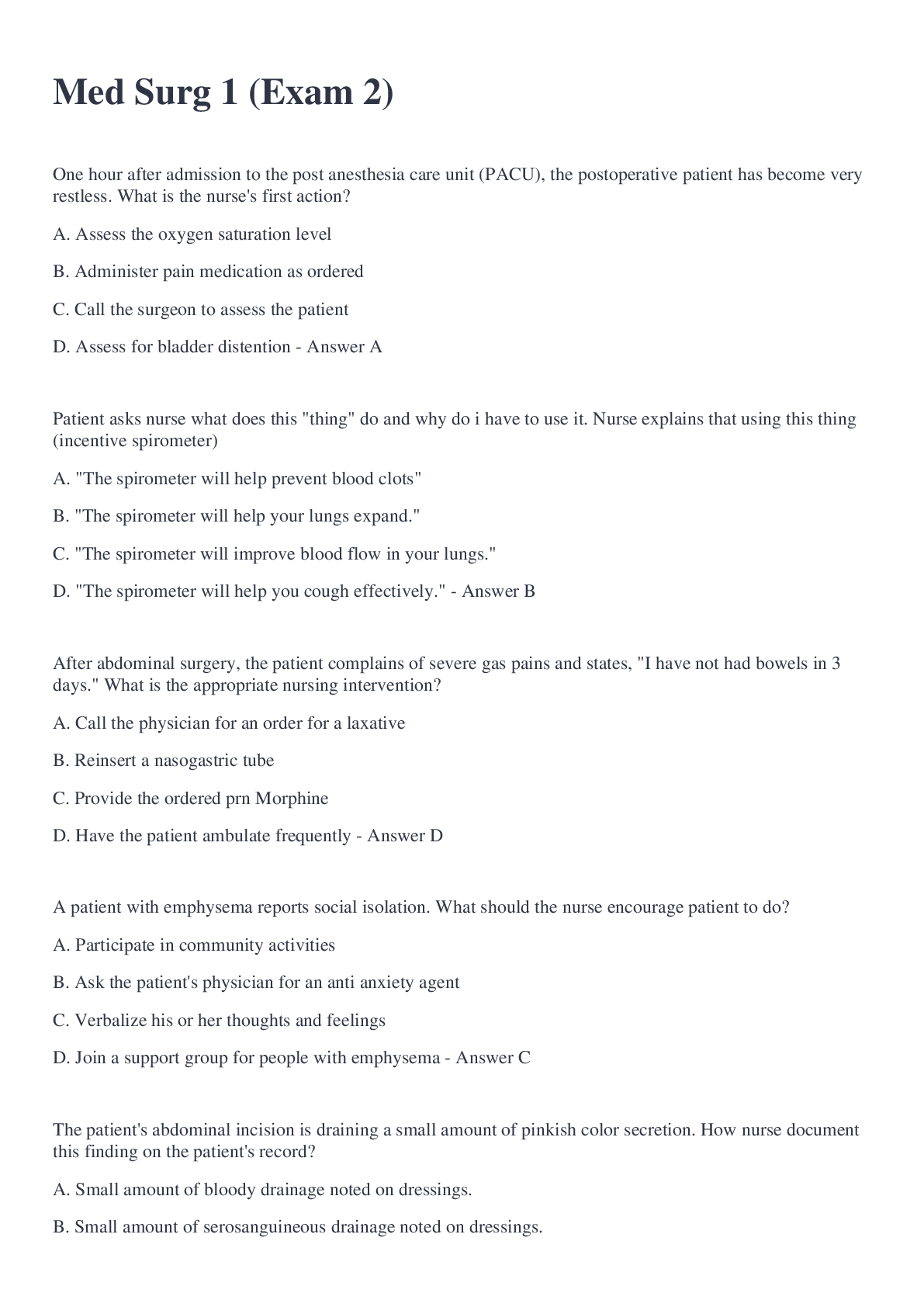
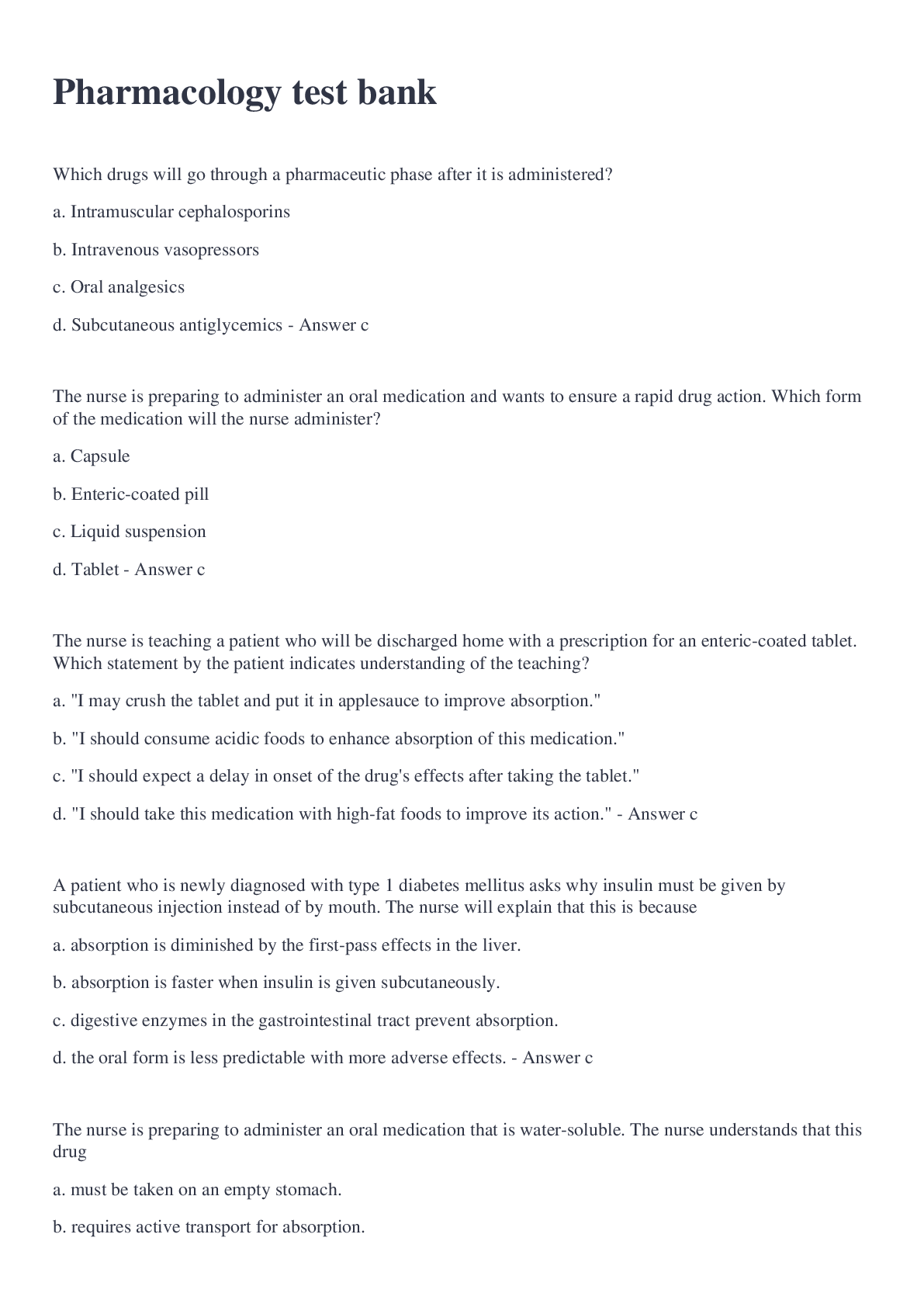
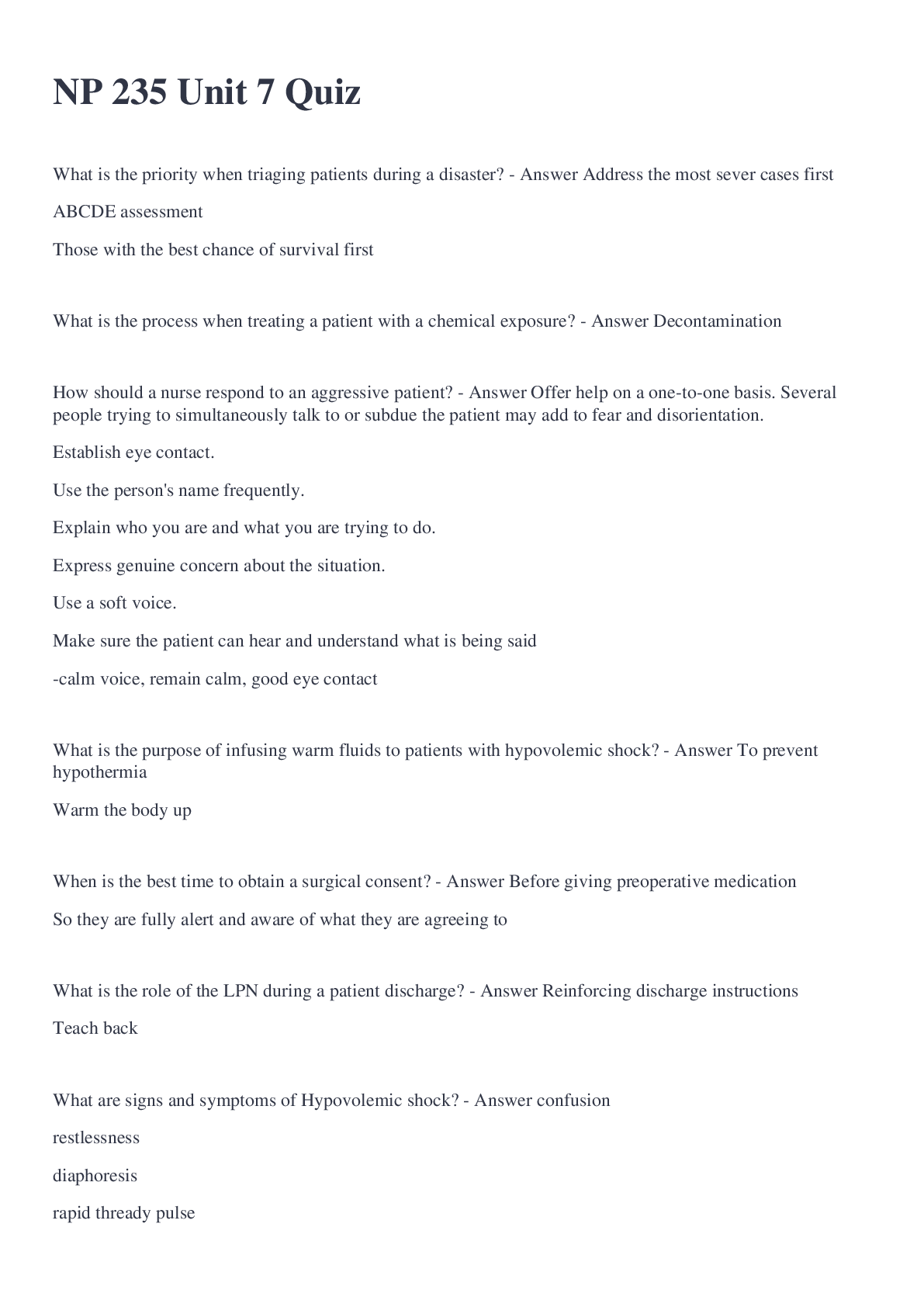
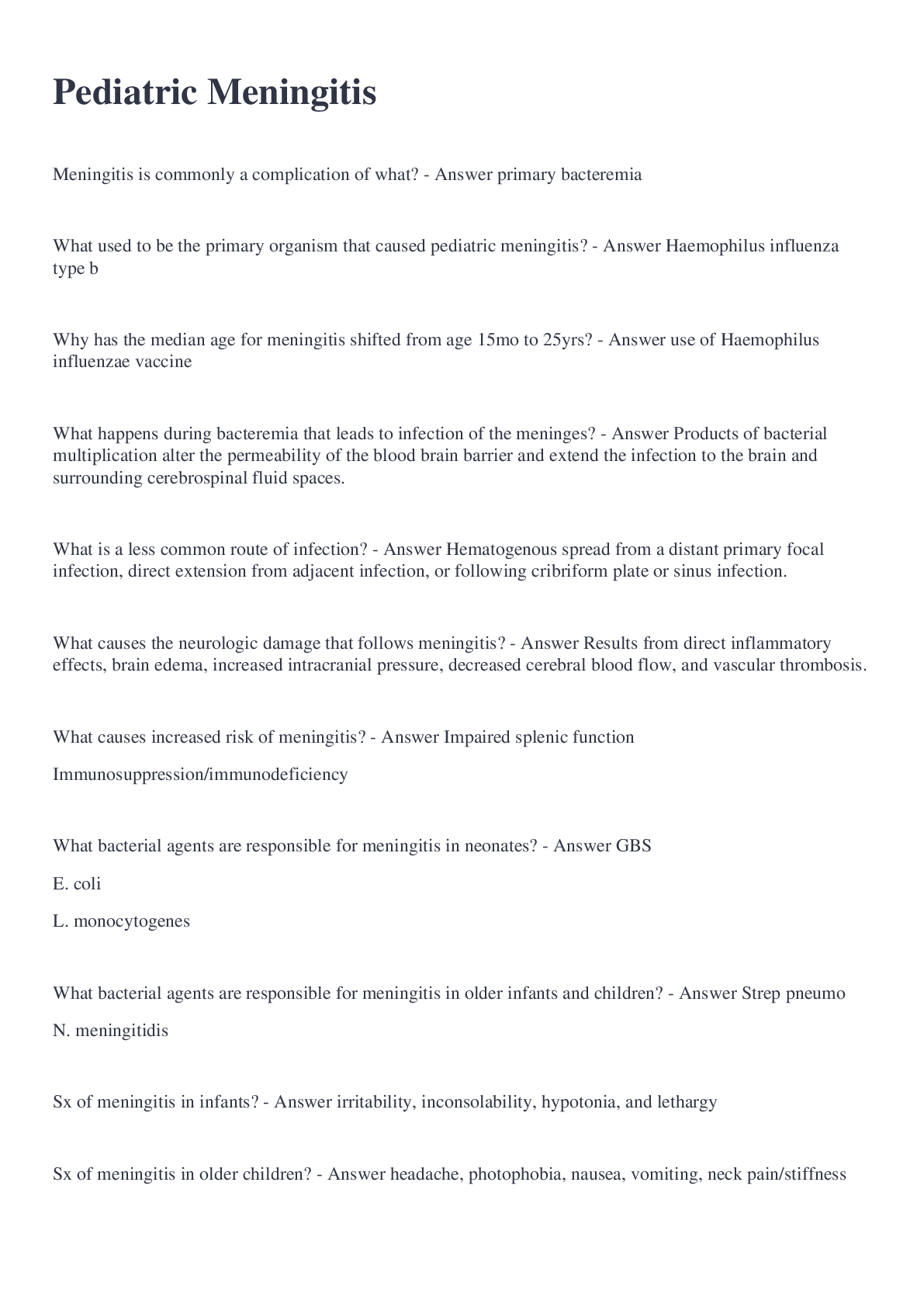
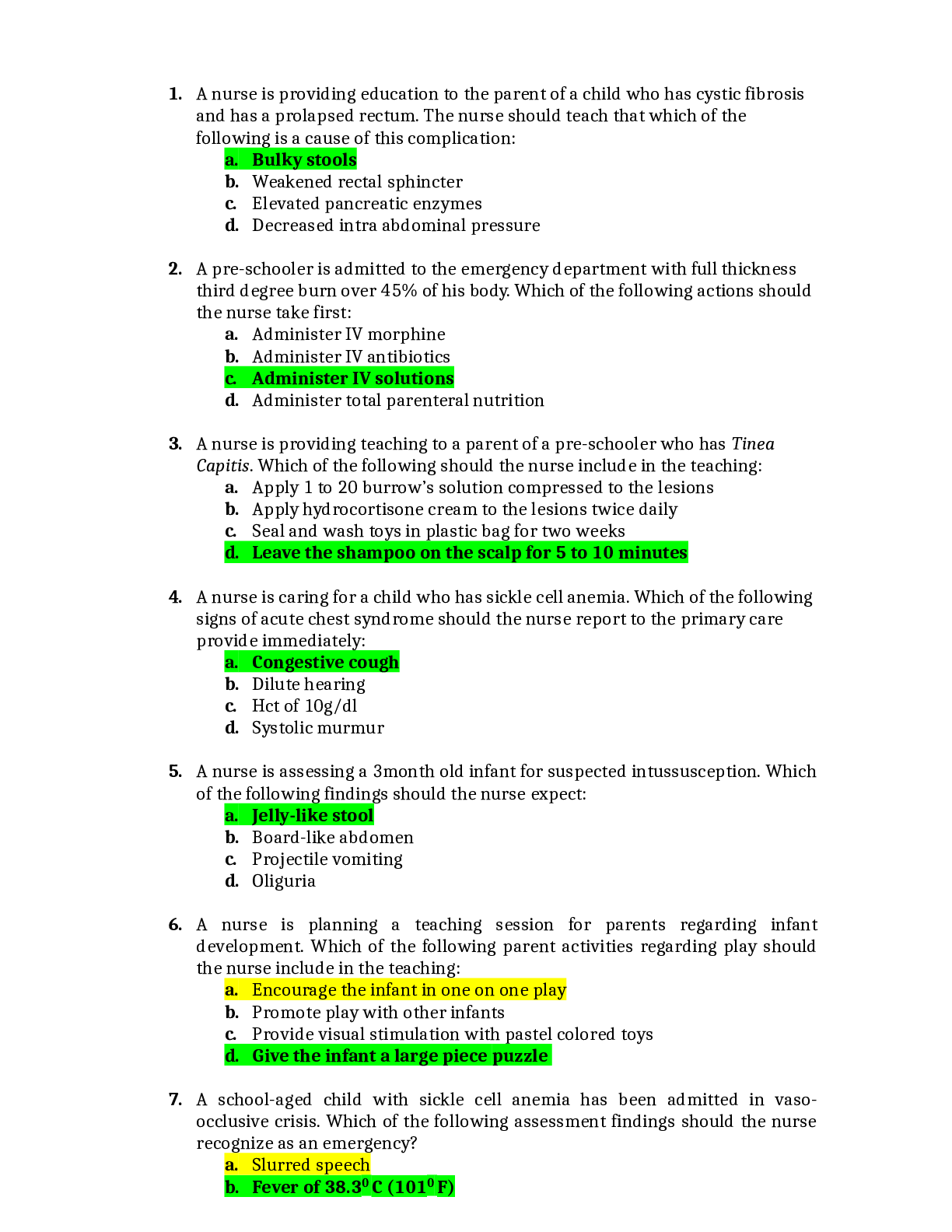
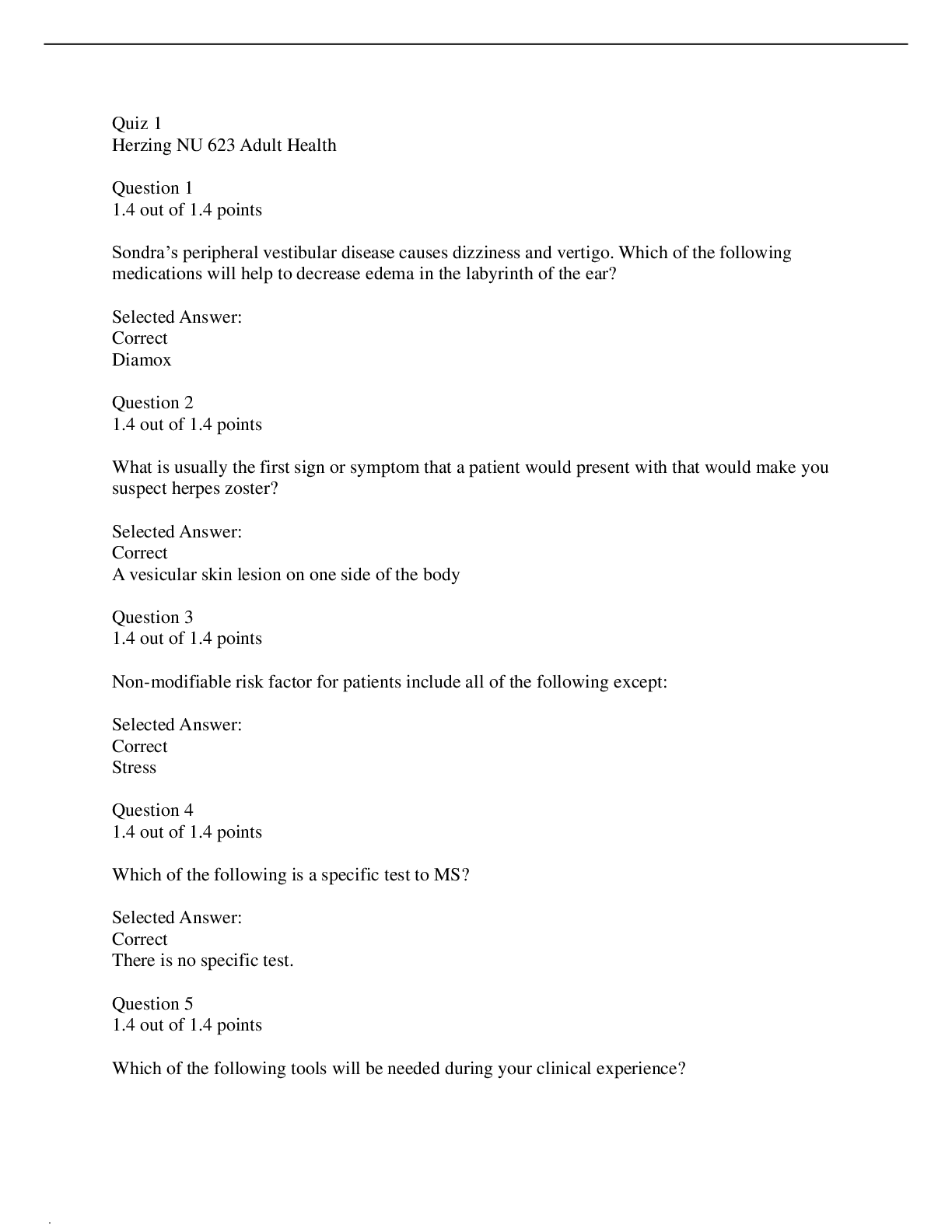

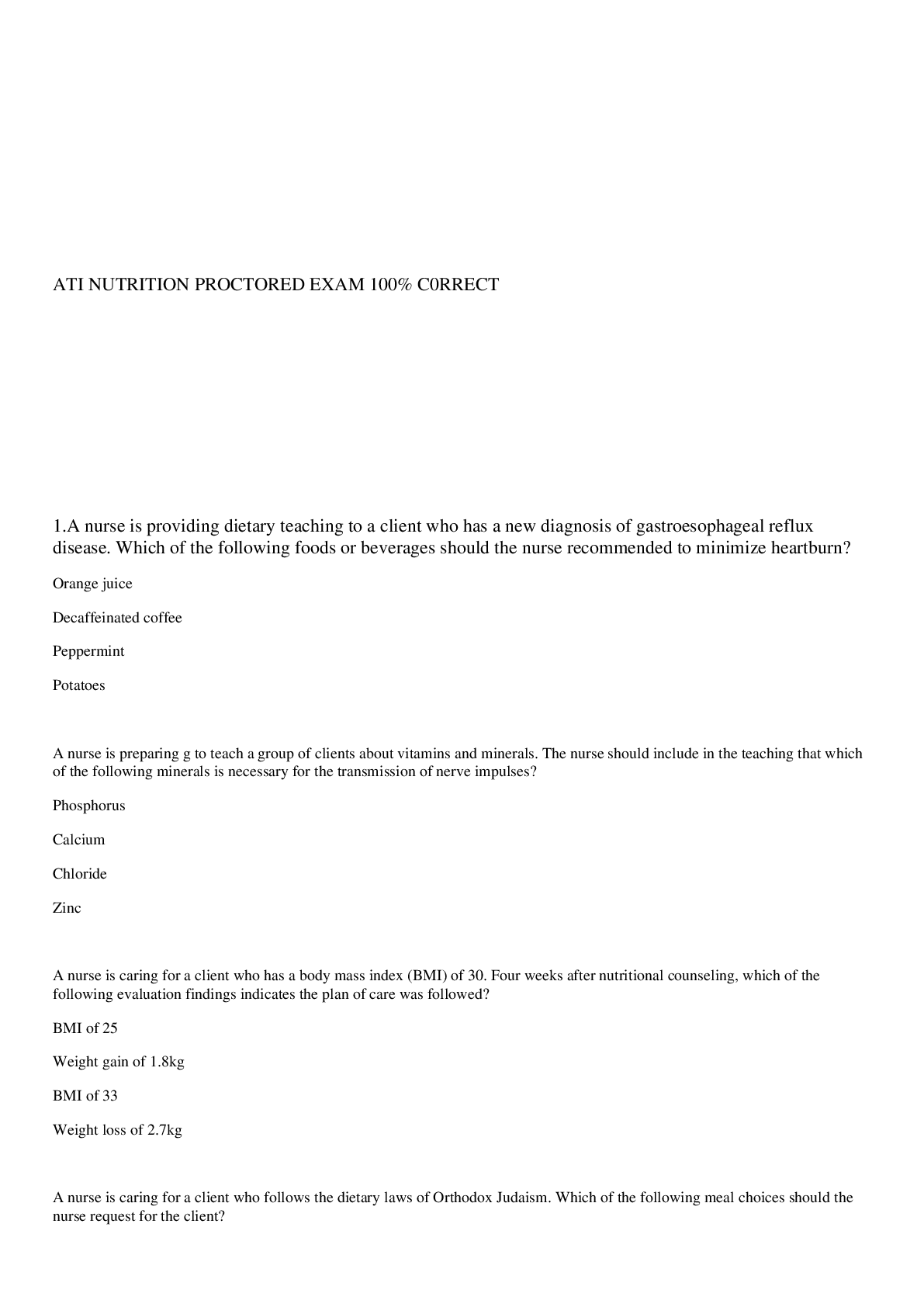
.png)



